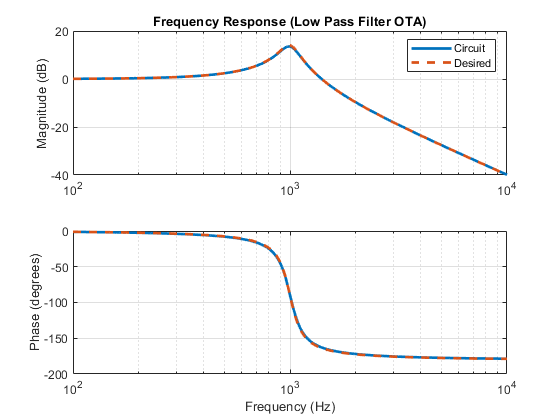Low-Pass Filter Using Operational Transconductance Amplifiers
This example shows how to model a second-order active low-pass filter. The filter is characterized by the transfer function H(s) = 1 / ( (s/w1)^2 + (1/Q)*(s/w1) + 1 ) where w1 = 2*pi*f1, f1 is the cut-off frequency and Q is the quality factor. Double-click on the Set Design Parameters block to set parameters f1 and Q. The block mask calls a function which sets the parameter values in the model workspace.
This model can be used to generate the filter frequency response. In the ideal case, the gain is zero dB at DC, -20*log10(1/Q) dB at frequency f1, and should attenuate at -12dB/octave at high frequency. The model can be used to determine the impact of impairments, such as finite transconductance gain, on the filter frequency response. Using an operational transconductance amplifier permits digital control of the filter by varying the values of the two current sources.
Model

Simulation Results from Simscape Logging
The plot below shows the response of the filter to a brief voltage pulse. This response can be analyzed numerically to determine the frequency response of the filter. The result from the circuit is compared with the result from a transfer function which was specified using the desired frequency response behavior, and we see that the results match nearly perfectly.

Frequency Response
The plot below shows the frequency response of the filter. The gain is zero dB at DC, -20*log10(1/Q) dB at the cutoff frequency, and attenuates at -12dB/octave at high frequency. The frequency response obtained from the circuit nearly perfectly matches the results from a transfer function specified using the desired frequency response behavior.
